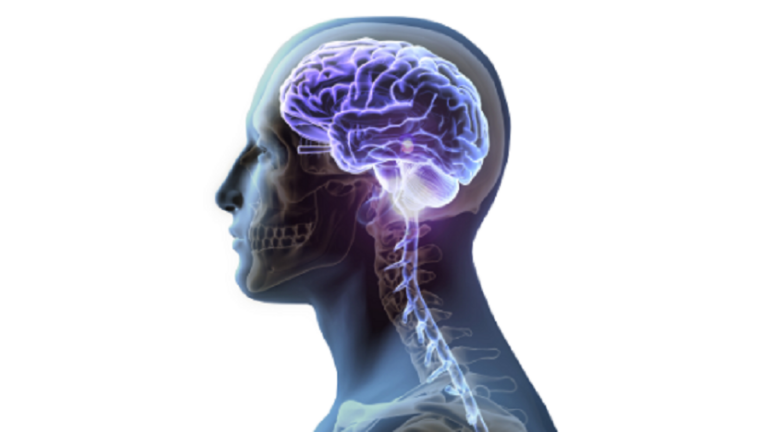Your ability to respond to stress and calm anxiety and depression is controlled by the relationship between 2 areas of your brain:
- Amygdala which identifies potential threats
- Prefrontal cortex which assesses threats and determines your response
Prefrontal Cortex
Your prefontal cortex, located in the front part of your brain behind your forehead, helps you reason, sustain focus and suppress impulses. Its ability to help your brain sort through stimulation and decide what information is relevant and what to ignore is the mechanism for calming your emotional response and improving your emotional intelligence.
Low frontal lobe function is often correlated with depression. Decreased firing in the prefrontal cortex results in lower levels of motivation and a decreased in your sense of well-being. This helps explain why most people who are depressed also can’t concentrate, focus or remember things.
Amygdala
Your amygdala is your threat assessment center. It monitors incoming signals from your 5 senses. When it senses potential danger, it connects to your prefrontal cortex to help interpret and assess and respond to the potential threat.
If your amygdala is aggressively firing danger detection signals and your prefrontal cortex is under-functioning and not properly inhibiting those fears, it can present as anxiety or panic attacks, both of which keeps you on alert to potential or imminent danger. In essence, you don’t feel safe.
Calming your Emotional Response
Depression and anxiety present when your prefrontal cortex is under-firing and your amygdala is over-firing. To calm both systems and enhance your emotional state, you need to down-regulate your amygdala and up regulate your hypothalamus.
When you use stimulatory essential oils to improve blood flow and the healthy function of your prefrontal cortex, while simultaneously calming your amygdala and your fear response, you are able to enhance your mental and physical function, calm anxiety and depression and accelerate healing.
Calming physical and mental overwhelm helps reduce background noise that stresses your system and burns through your energy reserves, allowing you to intentionally and calmly assess incoming stimulus and determine your response. When you feel safe and can assess a situation from a calm and grounded place with healthy prefrontal cortex function, you often make better choices and avoid problems. This allows you to feel calm, safe and drops your body in the best state for physical, mental and emotional healing.
In other words, your frontal lobe makes sure you react appropriately by reasoning through and assessing situations. It is this mechanism that is challenged in conditions like ADD/ADHD . Children with ADHD often have delays in frontal cortex development and cannot suppress their immediate desires and impulses.
Amygdala Hijack and Emotion Regulation
The term “amygdala hijack” was coined by Emotional Intelligence author Daniel Goleman to describe the state where your prefrontal cortex cannot inhibit or suppress your emotional response which contributes to a state of anxiety and overwhelm where every potential threat illicits a response.
For example, if you are hiking in the woods and think you see a snake on the ground, your prefrontal cortex assesses the situation before your amygdala reacts. If your prefrontal cortex determines that the snake is actually a stick, your amygdala calms down and you don’t over react. If your amygdala is hijacked, you will assume that every stick is a snake and constantly over-react to even minor threats.
This exaggerated amygdala reactivity can present as anxiety, impulsive aggression, personality disorders and contribute to chronic health conditions like chronic fatigue, fibromyalgia or multi-chemical sensitivity which are often associated with an amygdala hijack.
Essential Oils to Calm your Emotional Response
Essential Oils offer the most direct path to your frontal lobe.
Your olfactory nerve—also known as cranial nerve #1—travels directly to your
Smell is the only sense that does not travel to the thalamus (the relay center for all sensory signals) before accessing the forebrain. All other senses send signals through the thalamus first, which then sends the signals to your amygdala before forwarding it to your prefrontal cortex.
Essential Oils to Calm your Emotional Response
You can use essential oils to calm your emotional response by both enhancing:
1. Your prefrontal cortex to better receive and respond to threat signals
2. Your parasympathetic state. When you feel safe, your amygdala calms down and lowers output of perceived threats.
Amygdala hijack can contribute to sickness behavior symptoms like chronic fatigue, fibromialga and multi chemical sensitivity. Calming the amygdala and upregulating your prefrontal cortex helps to modulate both the input and output of your emotional response.
Essential Oils for the Pre-Frontal Cortex
Supporting the optimal function of your prefrontal cortex helps to calm your response to fear stimulus and unravel and heal conditioned fear responses (like PTSD). Healthy function of your prefrontal cortex supports healthy connection to your amygdala which helps you maintain conscious control over your anxiety.
Research backs this up. Functional brain imaging show engagement of the prefrontal cortex in suppression (voluntary inhibition of reaction to emotional stimuli) and reappraisal (cognitive re-interpretation of evocative stimuli to reduce negative affect) “The recruitment of these frontal regions occurs when subjects engage in active self-regulation and is associated with modulation of amygdala reactivity,” a region of the brain critical to the experience of negative emotions. “Evidence[JC1] of frontal involvement in the regulation of emotion is further supported by imaging studies in which similar frontal regions are observed to be important for the control of emotion-related behavior.”
Apply essential oils blends like Focus, Attention or Brain Boost (More HERE)
- Inside of the eyebrows,
- Over the temples and
- Base of the hairline on both the right and left hemisphere of the forehead
It’s hypothesized that when we are under stress, blood goes to the back of our brain, where the past is stored. Placing a hand, or appropriate essential oils, over these points on the forehead, helps shift the energy and blood flow from the more emotional mid‐brain areas to the area just below the forehead known as the prefrontal cortex which is associated with a calmer mind and rational, logical thinking.
Essential Oils for Safety
Calming your amygdala’s hair-trigger reaction helps to calm and reduce emotional outbursts. This begins by helping you feel safe. Your sympathetic “fight or flight” state turns on when survival and safety are threatened. Activating your parasympathetic “rest and digest” state can enhance your sense of safety. Applying Parasympathe
Resources:
Ready to get started? Click the links below to order today:




